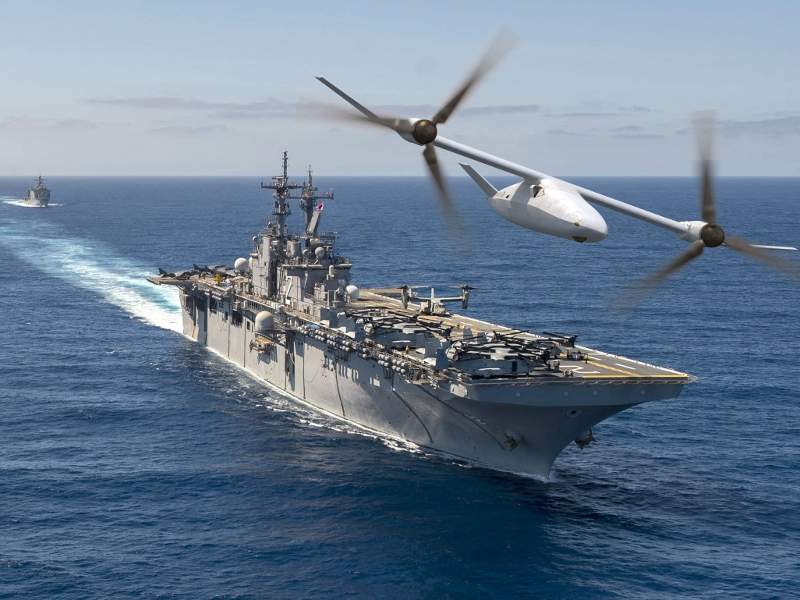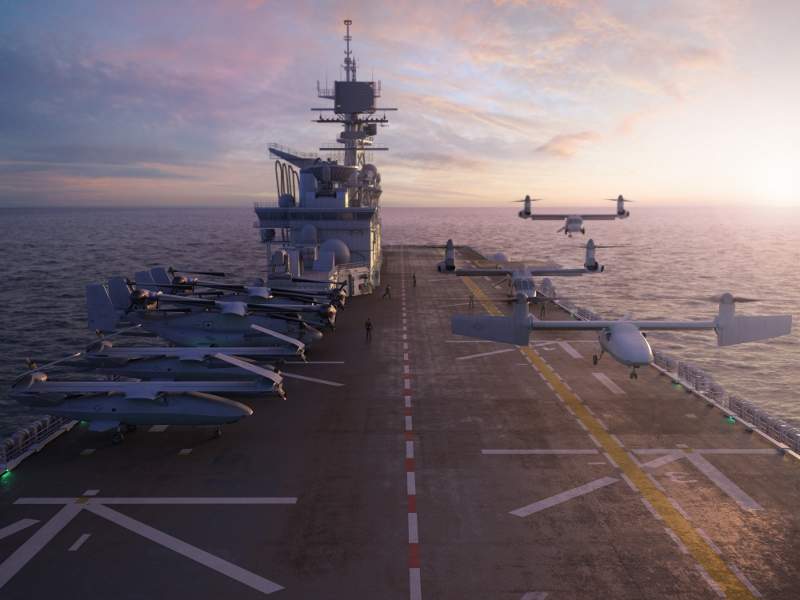The Bell V-247 Vigilant is a new multi-role tilt-rotor unmanned aerial vehicle (UAV) being developed by Textron subsidiary Bell Helicopter to meet the future requirements of the US Marine Corps (USMC).
Bell Helicopter revealed the design of the V-247 Vigilant tilt-rotor UAV in September 2016. The aircraft is designed to fit the capabilities drafted in the 2016 Marine Corps Aviation Plan. The V-247 Vigilant is expected to enter its production phase by 2023.
The Bell V-247 Vigilant can be deployed in a range of missions including electronic warfare, airborne early warning (AEW), escort for V-22 / V-280 tilt-rotor aircraft, persistent fire support, tactical resupply, and command, control, communications and computers intelligence, surveillance and reconnaissance (C4ISR).
Bell V-247 Vigilant design and features
Based on the high-wing aircraft design, the Bell V-247 features a fuselage integrating a long-wing structure, V-shaped tail and retractable tricycle landing gear. The platform will deliver helicopter-like vertical lift capability along with the speed and range of a fixed-wing aircraft. It is designed to offer long-range surveillance and runway independence to conduct missions in maritime zones without runway infrastructure.
The aircraft will have a wingspan of 65ft and rotor diameter of 30ft. The empty weight and maximum gross weight of the aircraft will be 7,257kg (16,000lb) and 13,380kg (29,500lb), respectively. The tilt-rotor UAV can carry up to 5,896kg (13,000lb) of cargo including fuel, armament and sensors.
The Bell V-247 Vigilant can be operated from the deck of DDG guided missile destroyers. The aircraft will offer a low logistical footprint, and its foldable-blade wing stow design will allow it to fit inside the C-17 aircraft and hangar space of the DDG vessels. The unmanned aircraft will deliver a footprint similar to that offered by UH-1Y when folded.
The tilt-rotor aircraft will be capable of delivering extended range while operating from land or vessels. The air-to-air refuelling capability will further provide the aircraft with higher loiter times for extended periods. The aircraft’s redundant flight control system will ensure safe and reliable flight operations.
Armament and sensors
The unmanned aircraft will be equipped with a modular payload system. The open architecture of the system will allow for the integration of weapon systems according to the mission type.
The payload bays are designed to accommodate a range of weapon systems, including an MK-50 torpedo or Hellfire or JAGM missiles. The tilt-rotor UAV can carry an internal mission payload of 907kg (2,000lb) and sling-load of 4,082kg (9,000lb).
The aircraft can also carry electro-optical and targeting systems, light detection and ranging (LiDAR) modules, sonar buoys and 360° surface radar modules. The V-247 Vigilant can be easily modified to meet multiple airborne mission requirements.
Engine and performance of Bell V-247 Vigilant
The V-247 will be powered by a single engine, which generates a power output of up to 4,410kW, driving two three-bladed tilt rotors.
The unmanned aircraft will have a long-range cruise speed of 250k, endurance speed of 180k and maximum speed of more than 300k at maximum continuous power. It can fly at a maximum altitude of 25,000ft and will offer a maximum time on station of more than 11 hours when carrying 600lb of mission payload at a 450 nautical mile mission radius.







